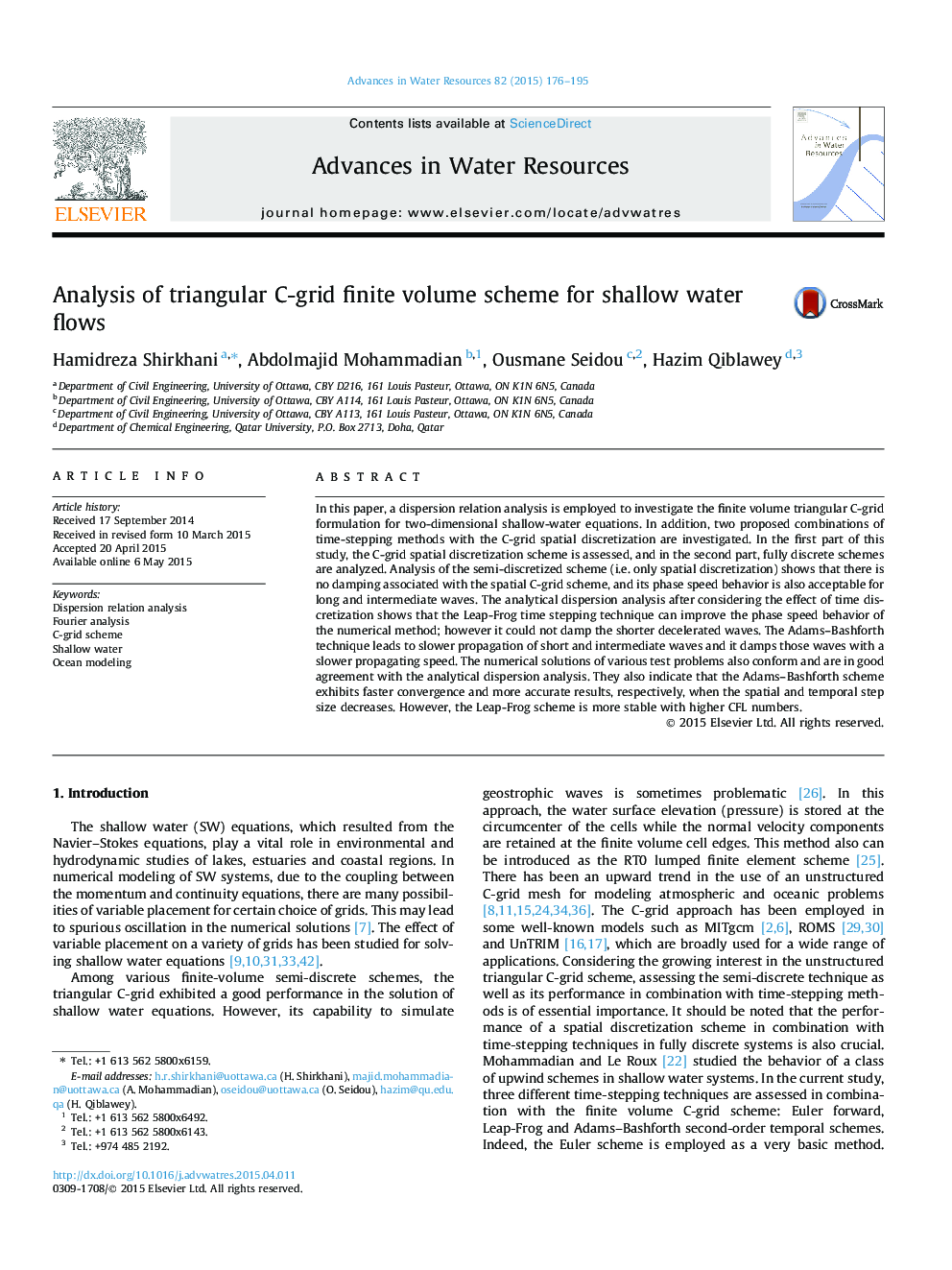| Article ID | Journal | Published Year | Pages | File Type |
|---|---|---|---|---|
| 4525386 | Advances in Water Resources | 2015 | 20 Pages |
•2D finite volume C-grid scheme was analysed using dispersion relation analysis.•Fully discrete approaches with Adams–Bashforth and Leap-Frog time stepping are analyzed.•The Leap-Frog improves the phase speed behavior of the C-grid semi discrete scheme.•Adams–Bashforth is more accurate, while Leap-Frog is more stable for higher CFL.•Non-linear and linear behavior of the schemes was found to be satisfactory.
In this paper, a dispersion relation analysis is employed to investigate the finite volume triangular C-grid formulation for two-dimensional shallow-water equations. In addition, two proposed combinations of time-stepping methods with the C-grid spatial discretization are investigated. In the first part of this study, the C-grid spatial discretization scheme is assessed, and in the second part, fully discrete schemes are analyzed. Analysis of the semi-discretized scheme (i.e. only spatial discretization) shows that there is no damping associated with the spatial C-grid scheme, and its phase speed behavior is also acceptable for long and intermediate waves. The analytical dispersion analysis after considering the effect of time discretization shows that the Leap-Frog time stepping technique can improve the phase speed behavior of the numerical method; however it could not damp the shorter decelerated waves. The Adams–Bashforth technique leads to slower propagation of short and intermediate waves and it damps those waves with a slower propagating speed. The numerical solutions of various test problems also conform and are in good agreement with the analytical dispersion analysis. They also indicate that the Adams–Bashforth scheme exhibits faster convergence and more accurate results, respectively, when the spatial and temporal step size decreases. However, the Leap-Frog scheme is more stable with higher CFL numbers.
